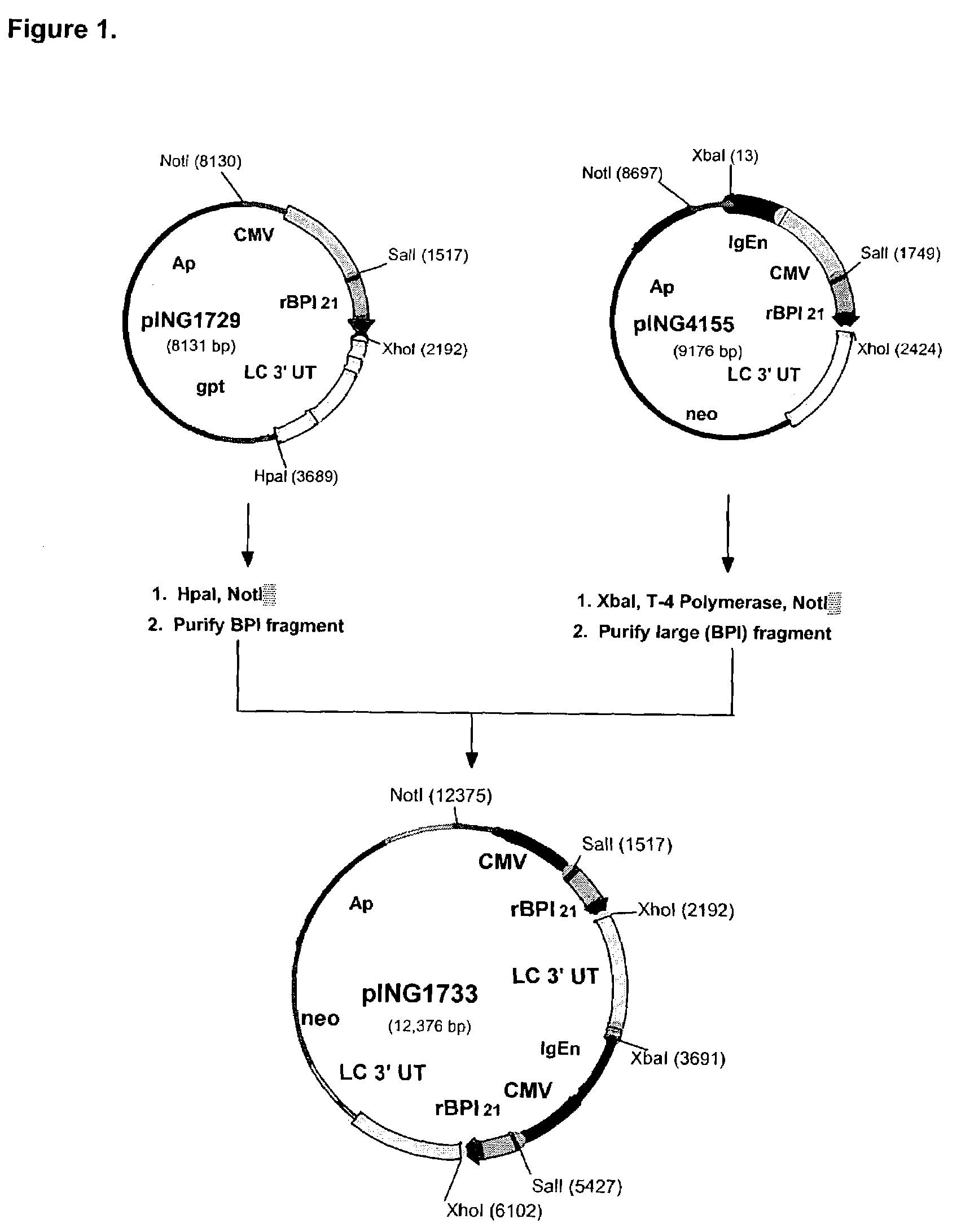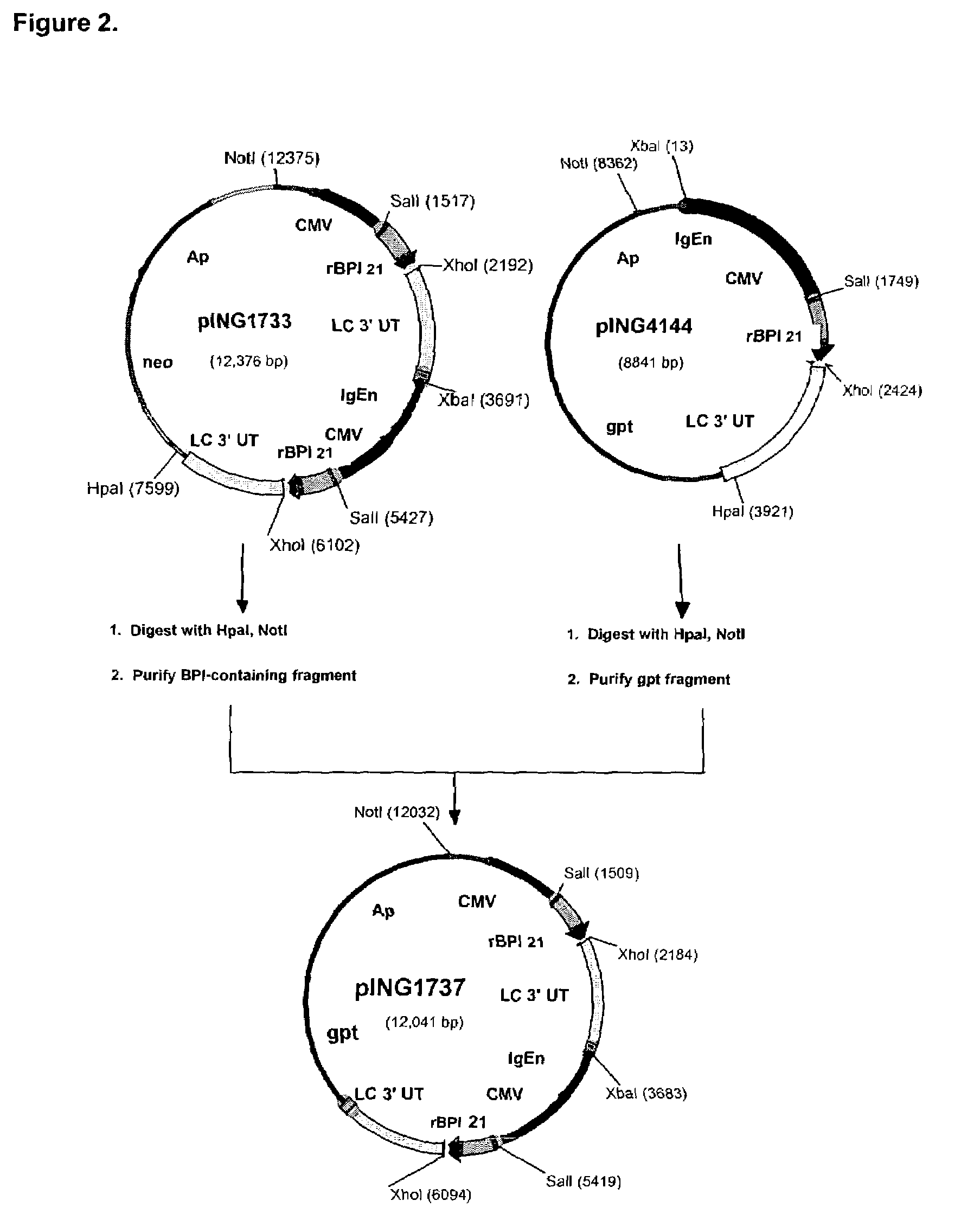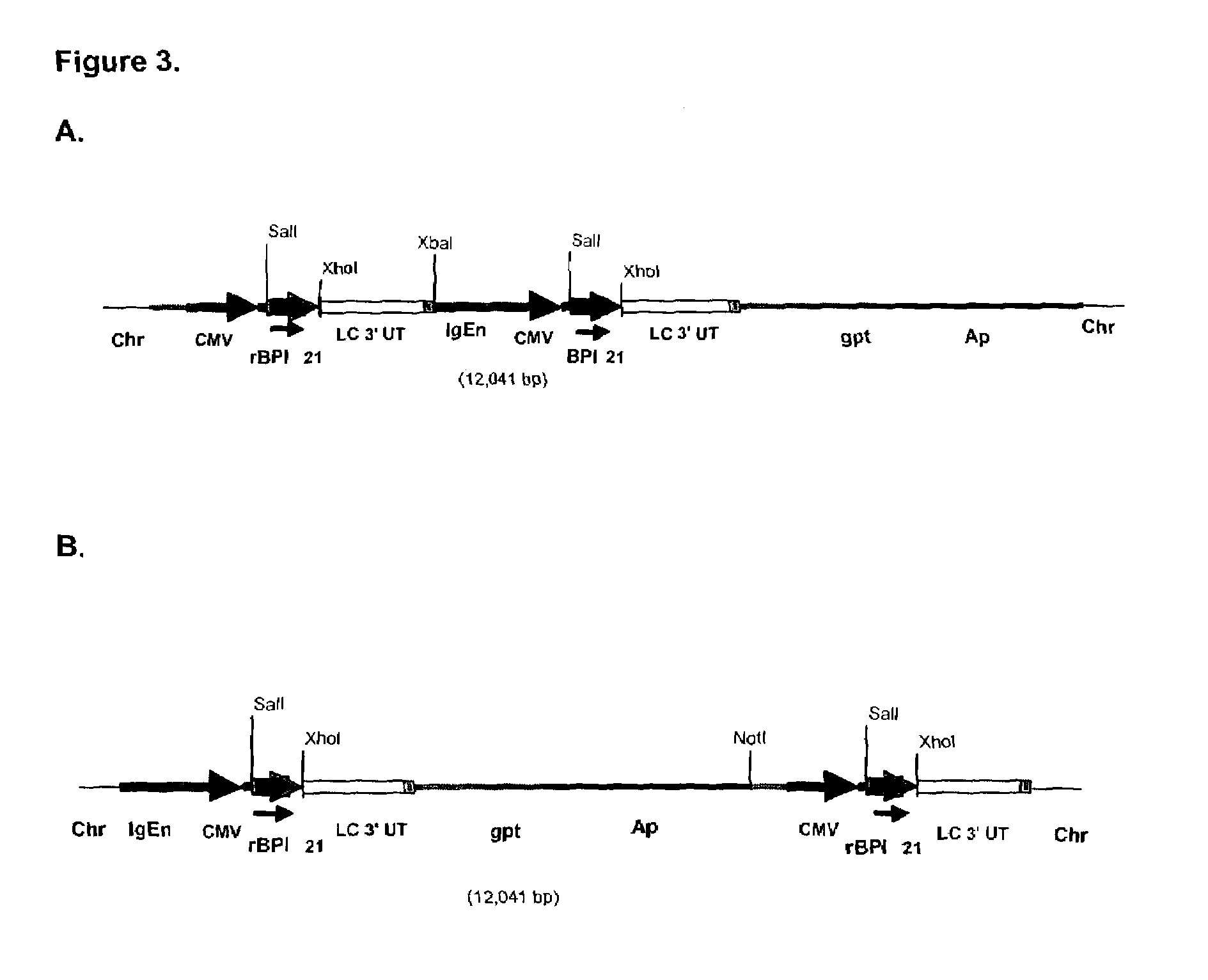Methods and materials for increasing expression of recombinant polypeptides
a technology of recombinant polypeptides and materials, which is applied in the field of methods and materials for increasing the expression of recombinant polypeptides, can solve the problems that cells transfected or transformed with such a vector and that underwent homologous recombination would not be able to grow in the presence of selective agents, so as to increase the production efficiency, increase the expression rate, and increase the effect of recombinant polypeptides
- Summary
- Abstract
- Description
- Claims
- Application Information
AI Technical Summary
Benefits of technology
Problems solved by technology
Method used
Image
Examples
example 1
Construction of Vectors
[0118]This example describes the construction of vectors that contain (i.e., comprise) multiple copies of an exemplary transcription unit. Exemplary vector constructs are also described containing multiple copies of exemplary gene sequences encoding a polypeptide of interest.
A. Construction of Expression Vectors Containing Two rBPI21 Genes and a Single Copy of the Mouse Immunoglobulin Heavy Chain Enhancer
[0119]The expression vectors, pING1729, pING4144, pING4151 and pING4155 were used as the source of DNAs encoding rBPI21 sequences (SEQ ID NO: 3 and 4). Plasmids pING4144 and pING4151 have been described in co-owned U.S. Pat. No. 5,674,834 by Theofan et al. pING4155 is similar to pING4144 and pING4151 except that it contains the neo gene for selection of G418-resistant transfectants. pING1729 is similar to pING4144 except that it lacks the mouse immunoglobulin heavy chain enhancer. This vector was constructed by deleting a ˜700 bp HindIII restriction fragment c...
example 2
Development and Characterization of Transfected Clones and Cell Lines
[0125]This example describes the development and characterization of clones and cell lines transfected with an exemplary vector following an embodiment of the present invention. The development and characterization of an rBPI21-producing CHO-K1 cell line, Clone 51, is described from a transfection with a two-gene vector as described in Example 1. The CHO-K1 cell line used for the development of Clone 51 was obtained from ATCC (CCL61). The cells were grown in Ham's F12 culture medium supplemented with 10% FBS.
[0126]Prior to transfection, 40 μg of pING1737 was linearized with either NotI or XbaI. CHO-K1 cells from Research Cell Bank C1754 were transfected with either NotI- or XbaI-digested pING1737 using electroporation by the procedure of [Andreason, et al., BioTechniques 6: 650 (1988)]. Following a 48-hour recovery period in Ham's F12 medium supplemented with 10% FBS, the cells were trypsinized, diluted in selectiv...
example 3
Increasing Expression Through a Second Sequential Vector Transfection: Development and Characterization of Transfected Clones and Cell Lines
[0133]This example describes the further increase in expression and production of polypeptides through a second transfection of an exemplary cell line with a second multi-transcription unit vector. The development and characterization of an rBPI21-producing CHO-K1 cell line, Clone 689, is described. Clone 689 was developed by transfecting Clone 51 cells as described in Example 2 adapted to Ex-Cell 301 medium supplemented with 2% FBS with the neo expression vector, pING1733 (FIG. 1) digested with XbaI prior to transfection. Clone 51 cells still growing in selective Ex-Cell 301 medium supplemented with 2% FBS (rather than completely adapted to serum-free growth) were used to allow prompt initiation of the second transfection.
A. Transfection of Clone 51 with pING1733
[0134]Clone 51 cells growing in selective Ex-Cell 301 medium supplemented with 2% F...
PUM
| Property | Measurement | Unit |
|---|---|---|
| Fraction | aaaaa | aaaaa |
| Fraction | aaaaa | aaaaa |
| Fraction | aaaaa | aaaaa |
Abstract
Description
Claims
Application Information
 Login to View More
Login to View More - R&D
- Intellectual Property
- Life Sciences
- Materials
- Tech Scout
- Unparalleled Data Quality
- Higher Quality Content
- 60% Fewer Hallucinations
Browse by: Latest US Patents, China's latest patents, Technical Efficacy Thesaurus, Application Domain, Technology Topic, Popular Technical Reports.
© 2025 PatSnap. All rights reserved.Legal|Privacy policy|Modern Slavery Act Transparency Statement|Sitemap|About US| Contact US: help@patsnap.com



